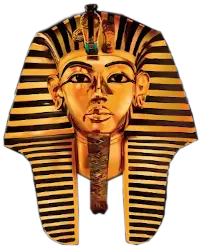
them, returned home with the conviction that the Nile was the home of the most profound religious knowledge.
The Greeks failed to imitate Egyptian conservatism and not only in Egyptian cities, with large Greek population, but in Europe, Egyptian divinities were corrupted with Greek and Asiatic names and mythologies and reduced to vague pantheistic personalities, so that Isis and Osiris had retained very little of their Egyptian origin. (Max Muller p. 241-43; Egyptian Mythology). Consequently, as they failed to advance Egyptian Philosophy, so they also failed to advance Egyptian religion.
During the first four centuries of the Christian era, the religion of Egypt continued unabated and uninterrupted, but after the Edict of Theodosius at the end of the fourth century A.D., ordering the close of Egyptian temples, Christianity began to spread more rapidly and both the religion of Egypt and that of Greece began to die. In the island of Philae, in the first cataract of the Nile, however, the Egyptian religion was continued by its inhabitants, the Blemmyans and Nobadians, who refused to accept Christianity and the Roman government fearing a rebellion, paid tribute to them as an appeasement.
During the sixth century A.D., however, Justinian issued a second edict which suppressed this remnant of Egyptian worshippers and propagated Christianity among the Nubians. With the death of the last priest, who could read and interpret "the writings of the words of the Gods" (the hieroglyphics) the Egyptian faith sank into oblivion. It was only in popular magic that some practices lingered on as traces of a faith that became a universal religion, or the survival of a statue of Isis and Horus, which were regarded as the Madonna and Child.
A sentiment of admiration and awe for this strangest of all religions still survived, but the information from classical writers concerning this faith has been incomplete. Napoleon's invasion of Egypt brought a revival of interest from the West to decipher her inscriptions and papyri with a view to an understanding and appreciation of this most ancient of civilizations.
Topics
Greek Philospohy is Stolen Egyptian Philosophy
The Memphite Theology is the Basis of all Important Doctrines of Greek Philosophy
Greek Philosophy was Alien to the Greeks
Greek Philosophy was the offspring of the Egyptian Mystery System
The Egyptians Educated the Greeks
The Curriculum of the Egyptian Mystery System
The Pre-Socratic Philosophers and the teaching Ascribed to them
The Athenian Philosophers
1. Socrates
2. Plato
3. Aristotle